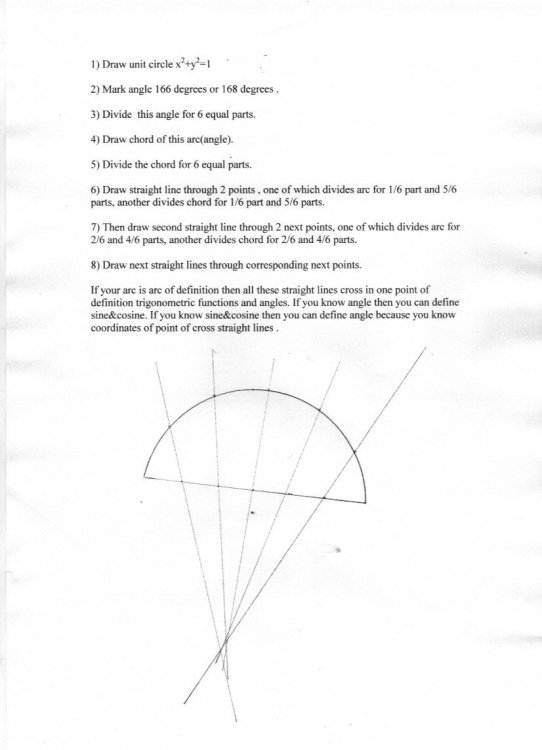-
Posts
18314 -
Joined
-
Last visited
-
Days Won
104
Content Type
Profiles
Forums
Events
Everything posted by studiot
-
I am sorry if my diagram confused you. All I did was cut and paste the drawing instructions given by Dima and attempt to use them to draw a diagram. That diagram was the result. I then asked if my diagram correctly showed his intentions but was not answered.
-
This is sort of true. The repulsion is against other orbitals in the same atom or molecule. It is not against other species, particularly not positive ions. And clearly it is against orbitals that have electrons in them not empty ones. More on this would be a story for another thread. You need to distinguish between neutral atoms and molecules and ions. HCl is a neutral covalently bonded molecule. When it ionises in solution that is when the H+ appears and is electrostatically attracted by the lone pair of the Nitrogen which is , as you say, exposed by the tetrahedral shape of the ammonia. The H+, of course, doesn't have any electrons in its shells.
-
-
https://www.bbc.co.uk/news/health-51906604 To be tested on volunteers in the US
-
No problem, this is a good question and you have found the correct subsection. Well done and welcome . +1 Both electrons forming a covalent bond need not come one from each atom. One atom may supply them both. This type of bond is called a dative covalent bond. Now what you are referring to was probably in solution. In solution the HCl is fully dissociated (it is a strong acid) to produce H+ and Cl- ions. The lone pair (do you understand lone pairs ?) of the nitrogen in the neutral ammonia and the H+ ion are drawn towards each other to form a dative covalent bond. Does this help?
-

Social distance and Walmart
studiot replied to Not_Too_Open_Minded's topic in Microbiology and Immunology
-
A self reversing linear motor ?
-
+1
-
Wouldn't a different solvent also have to dissolve HCl ?
-
It's called ionisation and can happen with suitable radiation, or in solution. However in solution, They quickly attach to another species.
-
No. I think perhaps there really is a language difficulty here. I don't know how they teach geometry in Russia, but 'similar' is another technical word in Mathematics that has a special meaning, This meaning relates particularly to shape. (basic) geometry distinguishes 'lines' (as straight lines) and curves which are ''line' that are not straight. An arc is part of (a segment of) a curve; a line segment is part of a line.
-
In Mathematics, the term 'a simplex' is used to refer to (mathematical) objects that have only one part. This is distinguished from 'a complex' that has more than one part, for example complex numbers. To enjoy the benefit of a ratio one need to be working with a set structure that allows division or fractions.
-
Try Geogebra. https://www.geogebra.org/?lang=en-GB It's free and your students can get it too.
-
That did not answer my question. Circular arcs have only one shape, by definition of circular. You still have not clarified what this thread is all about. Please do not use the word complex in mathematical discussion, unless you are actually referring to complex numbers. Use the word complicated perhaps.
-
There would be a 0.01M solution, with a quickly settling sludge in the bottom of the container. 'Imperfect' is a polite way of describing such a problem.
-
But where would you get a 4.69M solution of calcium hydroxide?
-
@DimaMazin I am still waiting for an answer.
-
math]f\left( x \right): = 0[/math] I have omitted the first [ bracket to show the code. With the bracket I get [math]f\left( x \right): = 0[/math] [math]f\left( x \right): = 0[/math] But I find I have to increase the font size from 'default' to say 24 to get something easily readable without a magnifying glass, especially for functions that have fractions with powers.
-
Can I suggest you get hold of a copy of Chasing the Molecule by John Buckingham. ISBN 0-7509-3345-3 2004 The modern book is a history of the development and philosophy of exactly this topic by a professional Chemist. Although rigourous it is emminently readable, more so than so many dry histories of the Science.
-
There are types and subtypes. https://www.cdc.gov/flu/about/viruses/types.htm
-
Just try again and do your best to set out what you actually want to say.
-
You need to be clearer how long the original force(s) is maintained, (when it starts and when it stops) and the same for the resisting forces. Acceleration in not like velocity, which is why they are different properties.
-
Yes, but that plot on the scope is a 'perfect' finite step function, whereas a perfect fourier square wave has infinities at those horizontal coordinates.



